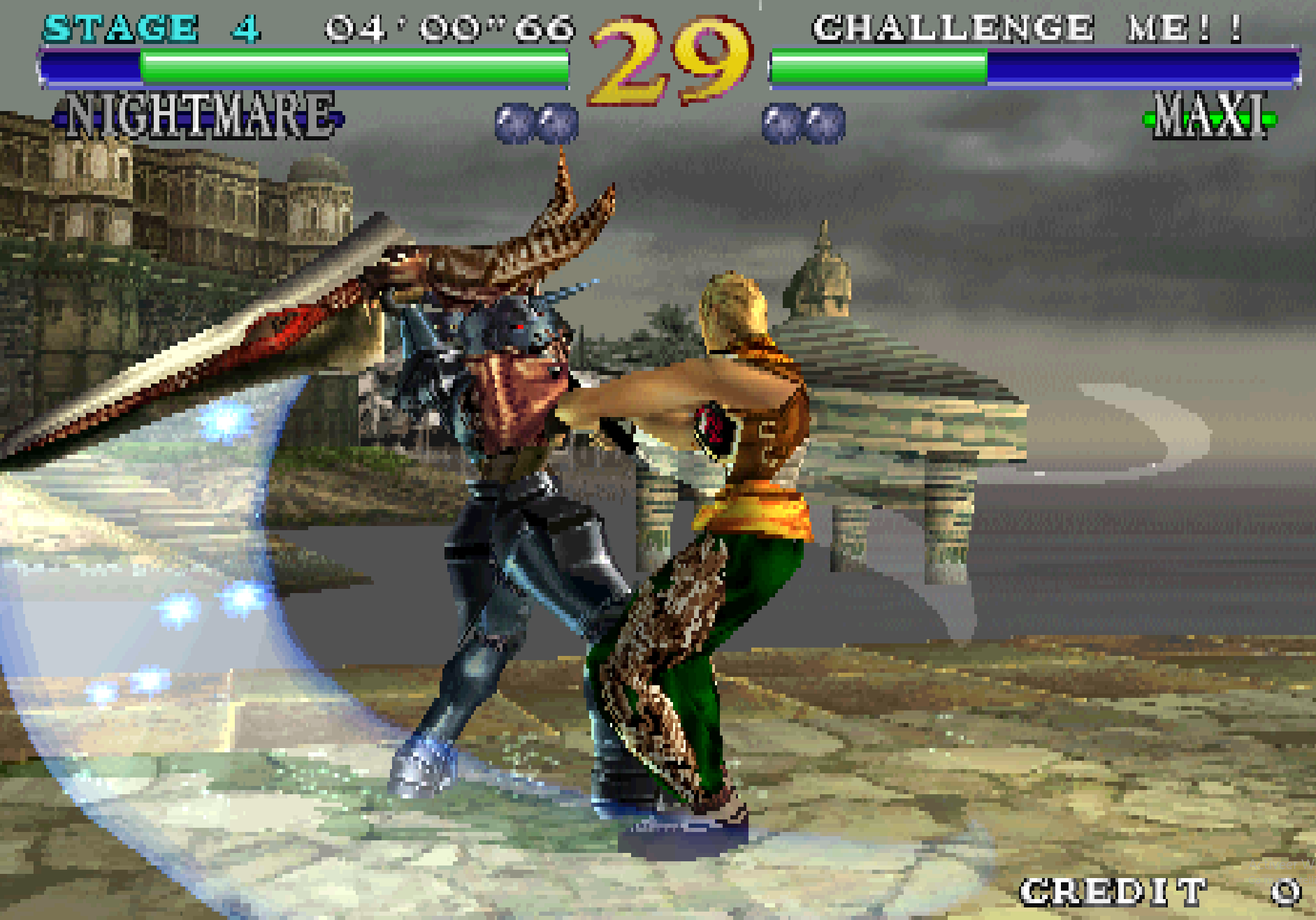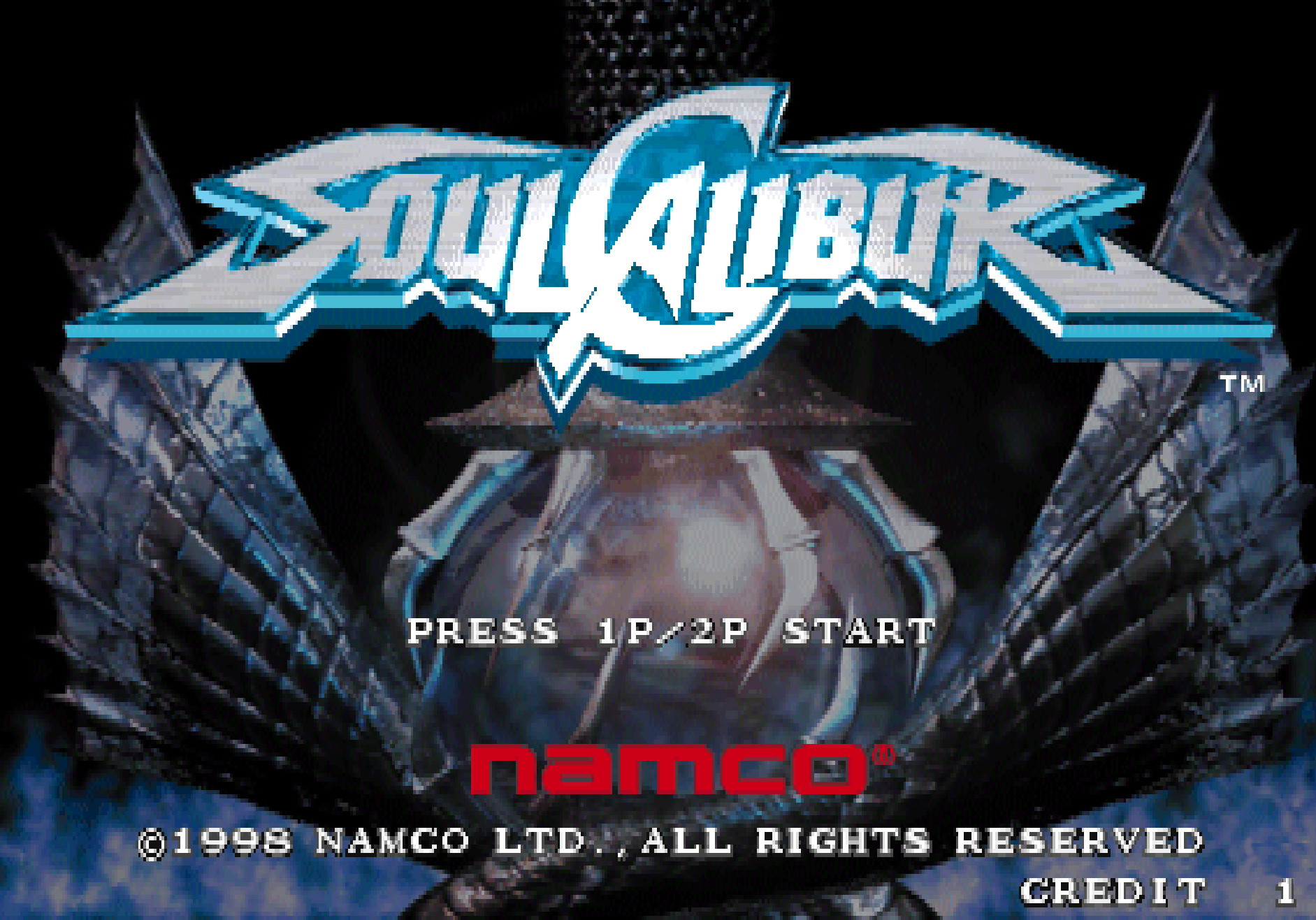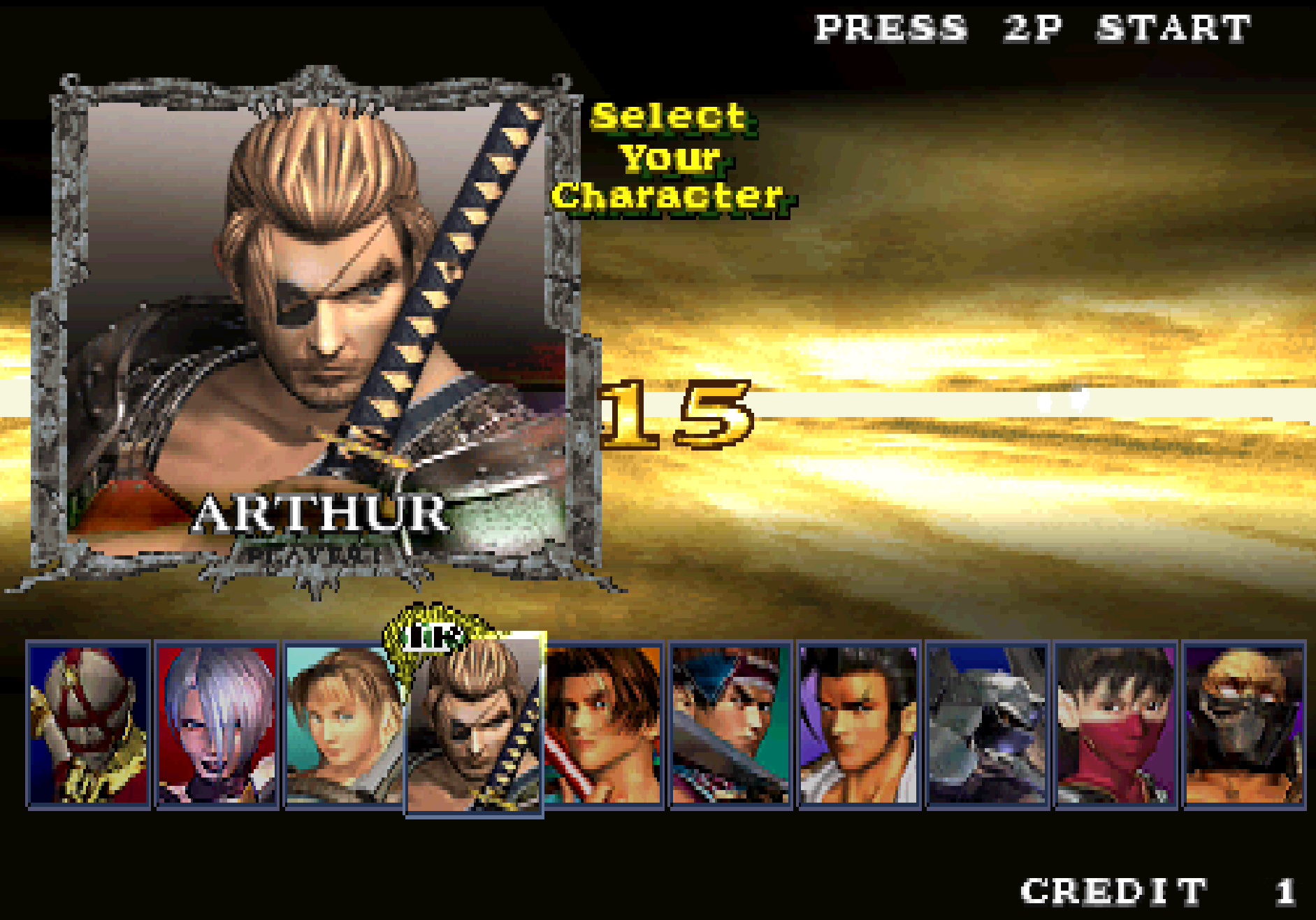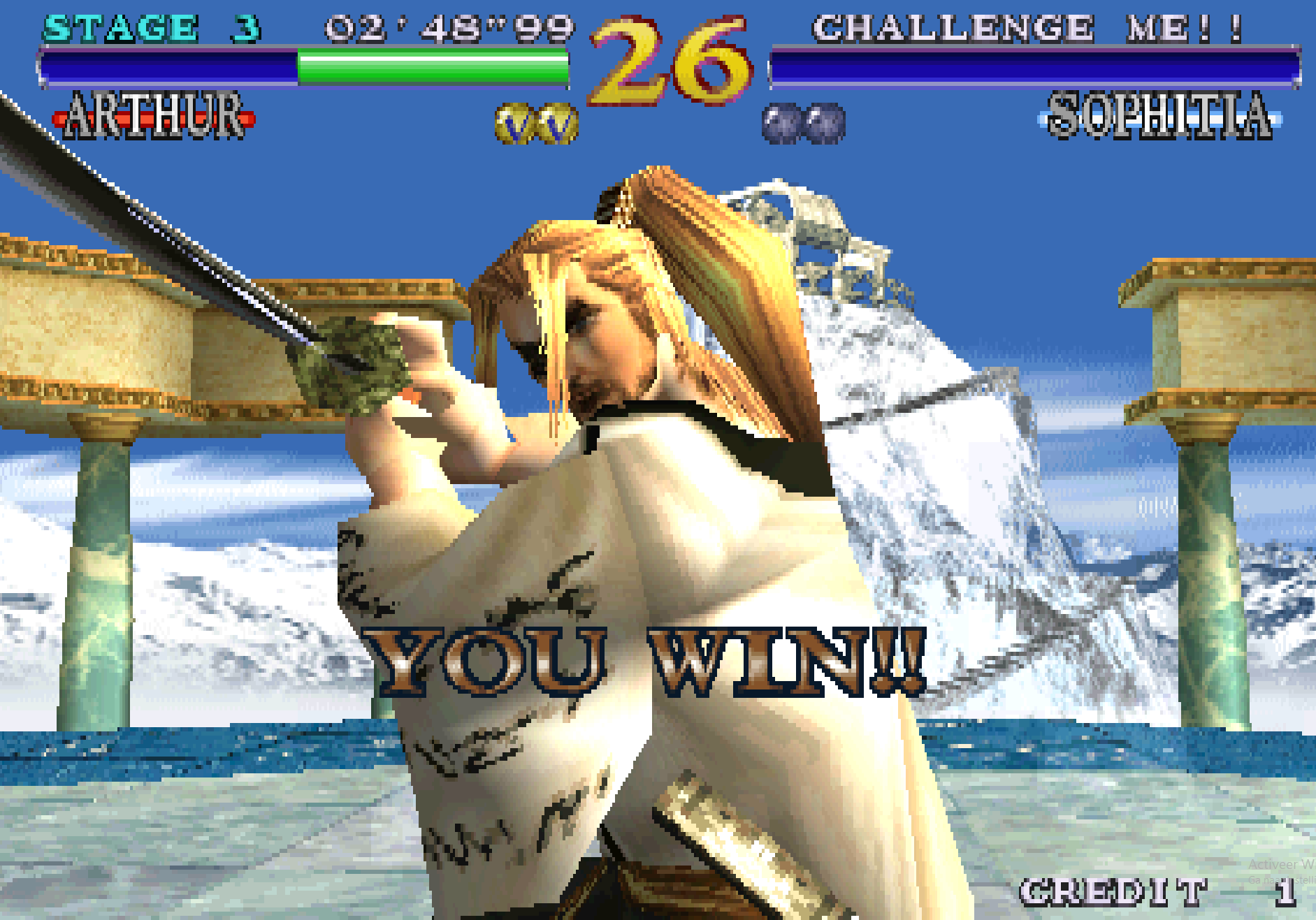Introduction
Released in 1998 by Namco, Soulcalibur is one of the most influential 3D weapon-based fighting games in history. As the sequel to Soul Edge, it revolutionized arcade fighters with fluid 8-way movement, cinematic presentation, and deep character mechanics. Widely regarded as one of the best fighting games ever made, Soulcalibur became a defining title for both arcades and home consoles.

Design and Development
Following the success of Soul Edge in 1995, Namco sought to refine its weapon-based combat mechanics and improve the technical aspects of 3D fighting games. Directed by Masahiro Okubo, Soulcalibur was developed for Namco’s System 12 arcade hardware, allowing for smooth animations and dynamic camera angles that enhanced the fighting experience.
The most notable gameplay innovation was the introduction of the 8-Way Run system, which allowed players to freely move in any direction, a feature that set it apart from other 3D fighters at the time.

Gameplay Video
Gameplay and Mechanics
- 8-Way Run System – Unlike traditional 3D fighters, players could move in any direction rather than being restricted to sidesteps.
- Weapon-Based Combat – Each fighter used a unique weapon with different attack styles, range, and speed.
- Guard Impact System – Players could parry attacks with precise timing, adding strategic counterplay.
- Ring-Out Mechanic – Fighters could be knocked out of the stage, adding an additional tactical layer.
- Character-Specific Move Sets – Each character had a deep and rewarding combat style.

Characters
- Mitsurugi – A powerful samurai wielding a katana.
- Siegfried – A German knight who would later become Nightmare.
- Taki – A fast and agile ninja wielding twin swords.
- Ivy – A mysterious warrior with a snake-like segmented sword.
- Voldo – A blind assassin with a bizarre, unpredictable fighting style.
- Sophitia & Xianghua – Skilled sword fighters representing grace and precision.
The game also introduced Nightmare, the dark alter ego of Siegfried, who became one of the most iconic villains in the series.

Cultural Impact and Legacy
Soulcalibur was a critical and commercial success, revolutionizing the weapon-based fighting genre. It was one of the highest-rated fighting games of its time and is often praised for its tight controls, cinematic presentation, and competitive balance.
The game later saw a hugely successful home console port on the Sega Dreamcast, where it became one of the console’s defining titles. Its impact on the fighting genre can still be felt in modern Soulcalibur entries and other weapon-based fighters.

Conclusion
With groundbreaking mechanics, an unforgettable cast, and technical innovations, Soulcalibur remains one of the greatest fighting games ever made. It set the gold standard for 3D weapon-based combat and left a lasting impact on the arcade scene.
Related Pages
- Tekken 3 – Namco’s other legendary 3D fighter.
- The King of Fighters '98 – A top-tier 2D fighting experience.
- Mortal Kombat II – A legendary arcade fighting game with brutal combat.

